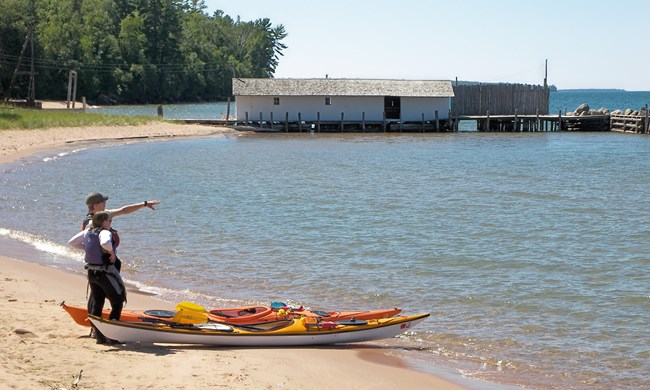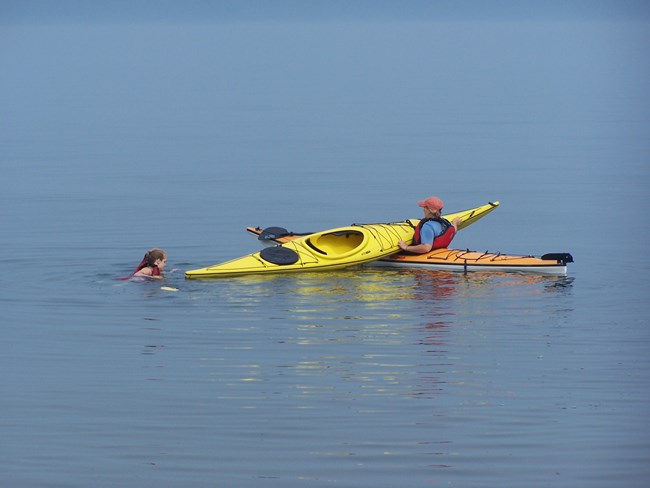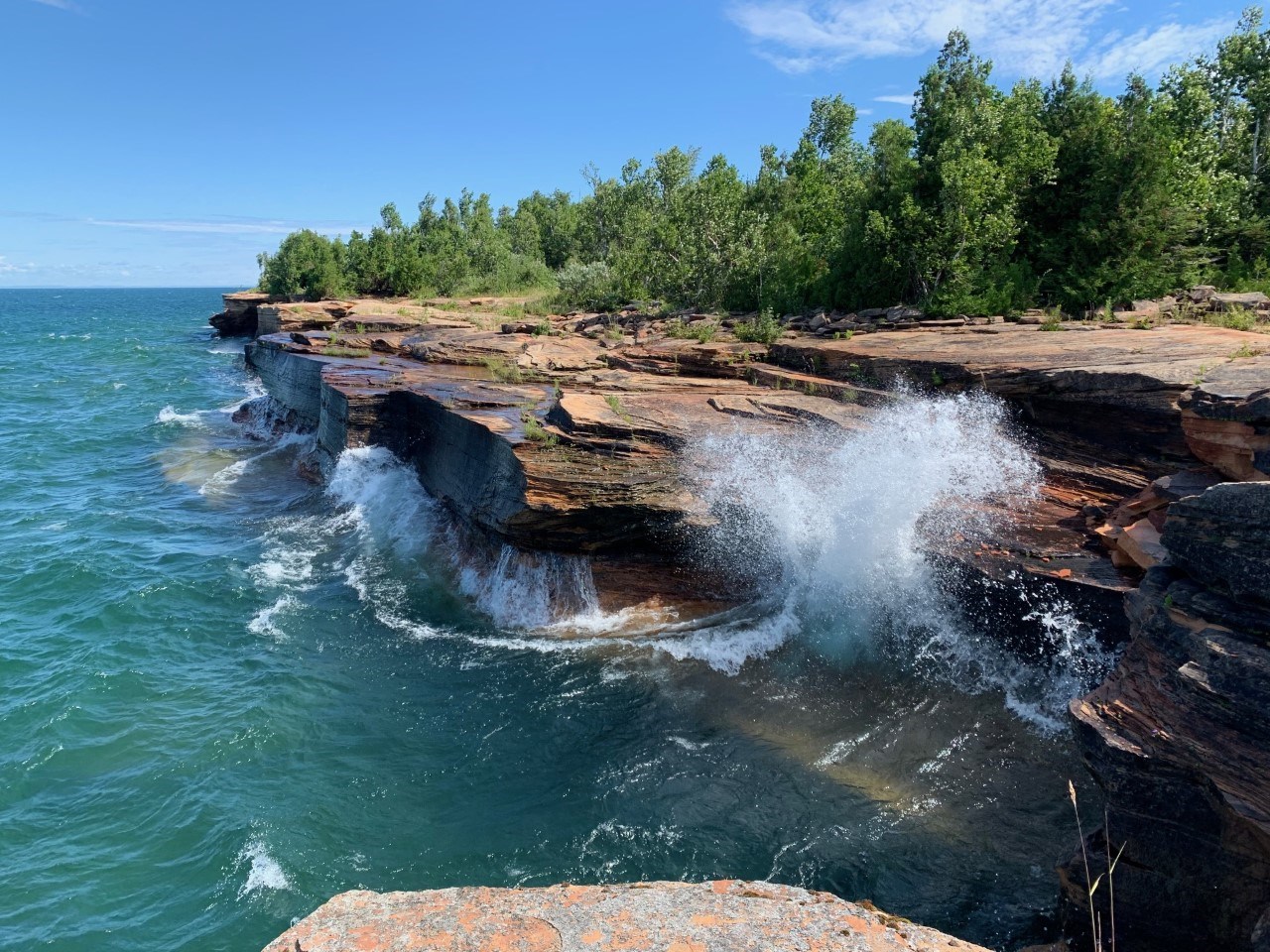Lake ConditionsLake Superior is renowned for its cold temperatures, rough seas, fog, and sudden squalls. Boaters should monitor marine weather forecasts and be constantly alert to changing conditions. Average daytime high temperatures range from 60 degrees Fahrenheit in May to the mid 80's in August. Average lows vary from 40 degrees in May, to the upper 50s in mid-summer, to 50 degrees in September. Average water temperatures in May and June are only in the 40s. Even in late summer, surface temperatures rarely exceed 60 degrees, except in protected bays. Average summer winds blow at from 5 to 20 knots with waves of from one to four feet. Winds of 30 to 40 knots and 6 to 12 foot seas are possible. NOAA’s National Weather Service forecast office in Duluth has both nearshore and open waters forecasts for Lake Superior as well as weather readings from the data buoy at Devils Island. 
NPS Photo Paddling ConcernsBe visible. Sea kayaks ride low in the water and are difficult for other boaters to see, especially during rough lake conditions. Always keep a lookout for approaching boats and use your paddle or flag to alert boaters to your presence. Brightly colored clothing can also improve visibility. Emergency ProceduresIf you have an emergency on the water try calling 911 or use marine channel 16 to reach emergency help. The U.S. Coast Guard and Park Rangers monitor marine channel 16. When talking with first responders always make sure to specify your location. For non emergency incidents call (715) 779-3397 (park headquarters in Bayfield). 
NPS Photo Self Rescue SkillsDo not exceed your skill level! If you are new to sea kayaking, it is recommended that you take a guided trip with an outfitter. Ask NPS staff if you have questions concerning weather, safety regulations, or destinations.
The American Canoe Association offers online instructions and guidance for all national paddlesports including kayaks, rafts, stand up paddle boards (SUP), and canoes. 
Photo/ S. Palmer Sea Cave SafetySea caves are enticing but can be extremely hazardous in rough seas. Rebounding waves can make boat handling difficult, if not impossible. These shorelines do not offer safe landing sites and should only be visited when conditions are calm. It is easy to underestimate distances between destination points. Allow plenty of time to accomplish your intended route. The Meyers Beach sea caves are approximately 1.5 miles from Meyers Beach launch site and extend for another 3 miles along the mainland shore line. 
NPS Photo Cold Water KillsLake Superior’s average summer surface temperature is 59°F / 15°C. If you fall out of your boat you have: Ask YourselfRemember, before you go paddling ask yourself: 
NPS Photo Wildlife Safety
Black BearsIslands like Stockton, Oak, and Sand host resident bears, but bears can swim to any of the Apostle Islands. Never approach a bear, even to take pictures. Keep at least 50 yards away. Never feed a bear. There are several ways to avoid a close encounter with a bear where you camp or picnic. Reduce food odors by washing dishes and cleaning the kitchen site after cooking. Use minimal amounts of water to clean dishes and broadcast that wastewater on the ground at least 50 yards from camp. Do not keep food, garbage, or toiletries (such as toothpaste or soap) in your tent. Bear proof food lockers are provided at all campsites within the Apostle Islands. Food must be locked in the food lockers except during meals. Where food lockers are not available (primitive camping) hang the food cache in a tree away from the tent and at least 12 feet from the ground and five feet from the trunk. Do not bury, scatter or try to burn food scraps. Bag garbage and pack it out. If you encounter a bear near a dock, campsite, or picnic area, use tone of voice and body posture to show you are in charge, yell and make noise until the bear leaves the area, then report the encounter to park staff. Insects and TicksBiting insects can be prevalent on the islands from June to September. Wearing long pants and long sleeved shirts will provide some protection from mosquitos, biting flies, and ticks. Insect repellents are helpful. The ticks that transmit Lyme Disease and Ehrlichiosis are found in the park. If you notice a rash, flu-like symptoms, or pain in the joints following a tick bite, call your physician. |
Last updated: October 14, 2021
